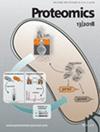Psidium Defenses Against Meloidogyne enterolobii: Proteomic and Microscopic Analysis of this Plant-Predator Association
Abstract
Guava (Psidium guajava), referred to as the “tropical apple,” is esteemed for its sweet flavor, nutritional density, and medicinal attributes, being rich in ascorbic acid, phenolics, carotenoids, fibers, and minerals. Despite its agricultural significance, guava cultivation faces considerable challenges from plant-parasitic nematodes, particularly root-knot nematodes from the Meloidogyne spp. In South America, Meloidogyne enterolobii causes severe root damage and economic losses to this crop. Plants fight nematodes through complex immune mechanisms involving pattern recognition receptors and signaling pathways, such as pattern-triggered immunity. The present research employed comparative shotgun proteomic analysis complemented by microscopic imaging and histochemical assays of roots from susceptible P. guajava and resistant P. guineense, inoculated or not with M. enterolobii. Psidium-M. enterolobii interactions revealed intricate plant cellular responses such as giant cells formation, hypersensitivity reactions, and biochemical pathway adjustments in sucrose transport and antioxidant enzyme activities. Synthesis and accumulation of secondary metabolites like terpenes, alkaloids, and phenolics in inoculated and resistant plants were positively correlated to plant resilience. Heat shock proteins and protein disulfide isomerases also emerged as pivotal in plant response, being upregulated during nematode infection.
Summary
-
The work addresses and unravels some of the puzzle pieces in the net of processes triggered in a plant prey (Psidium spp.), of either susceptible (P. guajava) or resistant (P. guineense) phenotypes, when confronted by its nematode predator (Meloidogyne enterolobii).
-
The main alterations detected in the roots of these plants ranged from giant cells formation, hypersensitivity reactions, biochemical adjustments in sucrose transport pathways and in antioxidant enzyme activities, to increases in secondary metabolites (terpenes, alkaloids, and phenolics) and in heat shock proteins and protein disulfide isomerases.
-
All these defensive mechanisms were triggered by the nematode attack on both species and were more prominent in P. guineense, which positively correlates them to the plant resistance against M. enterolobii.





 求助内容:
求助内容: 应助结果提醒方式:
应助结果提醒方式:


